 Java
Java
 javaTutorial
javaTutorial
 Graphical analysis of the underlying technology of NIO and NodeJS supporting Java
Graphical analysis of the underlying technology of NIO and NodeJS supporting Java
Graphical analysis of the underlying technology of NIO and NodeJS supporting Java
It is well known that in recent versions of Java, some support for Java NIO and NIO2 has been added. At the same time, one of the most praised advantages of the NodeJS technology stack is its high-performance IO. So the topic we want to discuss today is the underlying technology that supports these technologies.
A question to ask before starting is:
Why didn’t NodeJS and Java NIO2 appear earlier?
Answer: Personally, I think the underlying support technology is not yet mature.
So, what does the underlying technology refer to? Yes, I think many people have guessed that it is operating system technology. The two concepts proposed in this article, Java NIO2 and NodeJS, are without exception user-mode technologies or application layer technologies, and these application layer technologies run on the OS. At the same time, with the advancement of the operating system, they can support The Programming model is also richer. It can be said that these two technologies are completely evolved to apply the dividends brought by the advancement of operating systems. Generally speaking, the first technology to enjoy this benefit must be C\C++, because most of the latest improvements in OS are system calls, and C\C++ is the most convenient to apply these system calls, but it is also the most complex. In order to obtain the same performance, other platforms must continue to evolve and package so that users can take advantage of these bonuses. Once that platform stops updating, it is the time for this platform to decline. The more convenient the package is for users, the more user-friendly it is, and the more people may use it. Although many people can quickly write code based on these platforms, they often fail to understand the essence because they still do not understand the motivations and principles of these technologies. The technologies we discuss below are the underlying technologies related to these two technologies.
No matter which OS design, the following five IO models are essential.
1. blocking I/O
2. nonblocking I/O
3. I/O multiplexing (select, poll and epoll)
4. signal driven I/O (SIGIO)
- ##5. asynchronous I/ O (the POSIX aio_ functions)
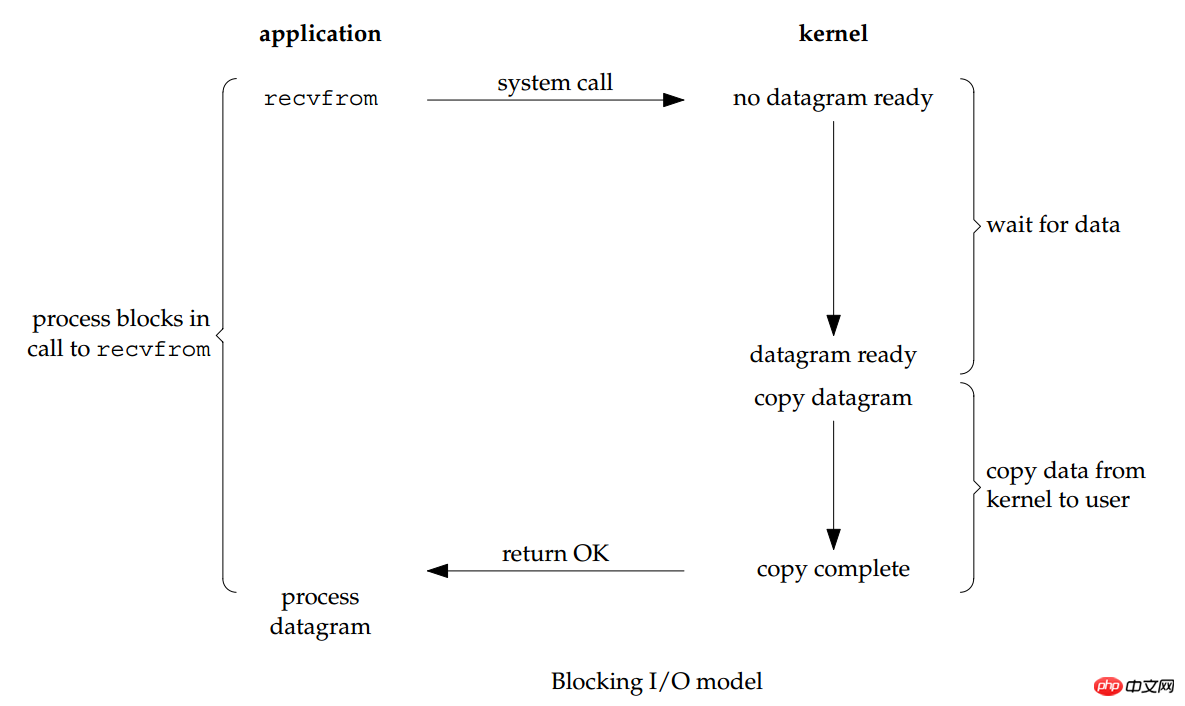
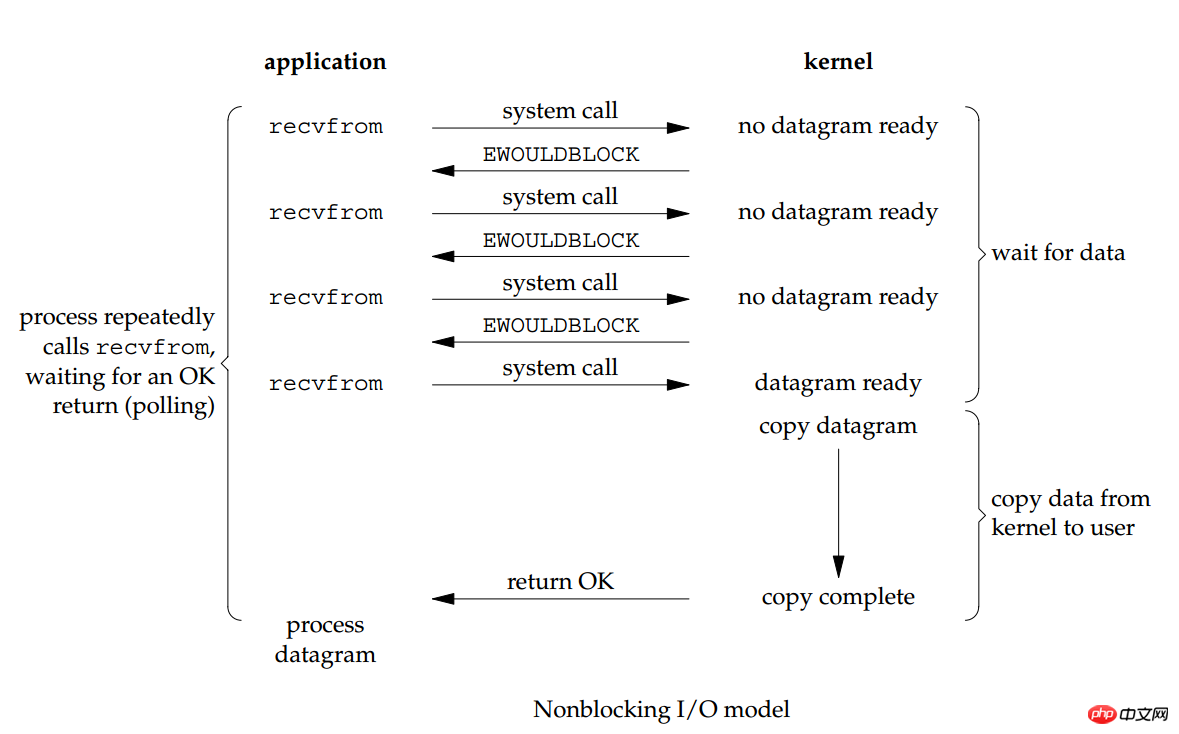

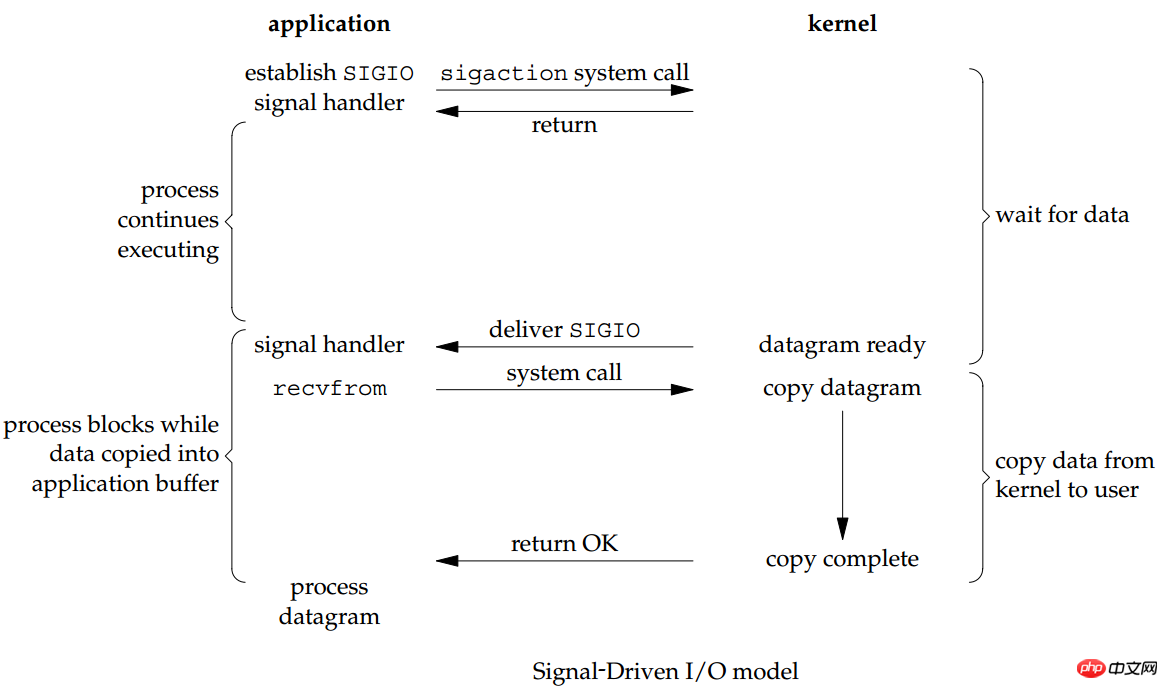
Linux is making efforts in this area. Once the OS makes progress in this aspect, programmingframework ,The platform and programming model may still need ,to be simplified to a large extent.
Although this model is rarely supported by OS, it does not mean that there is no such AIO model now. Many frameworks have done work in this area and simulated AIO in user mode, so that users can do more Focus on business logic code.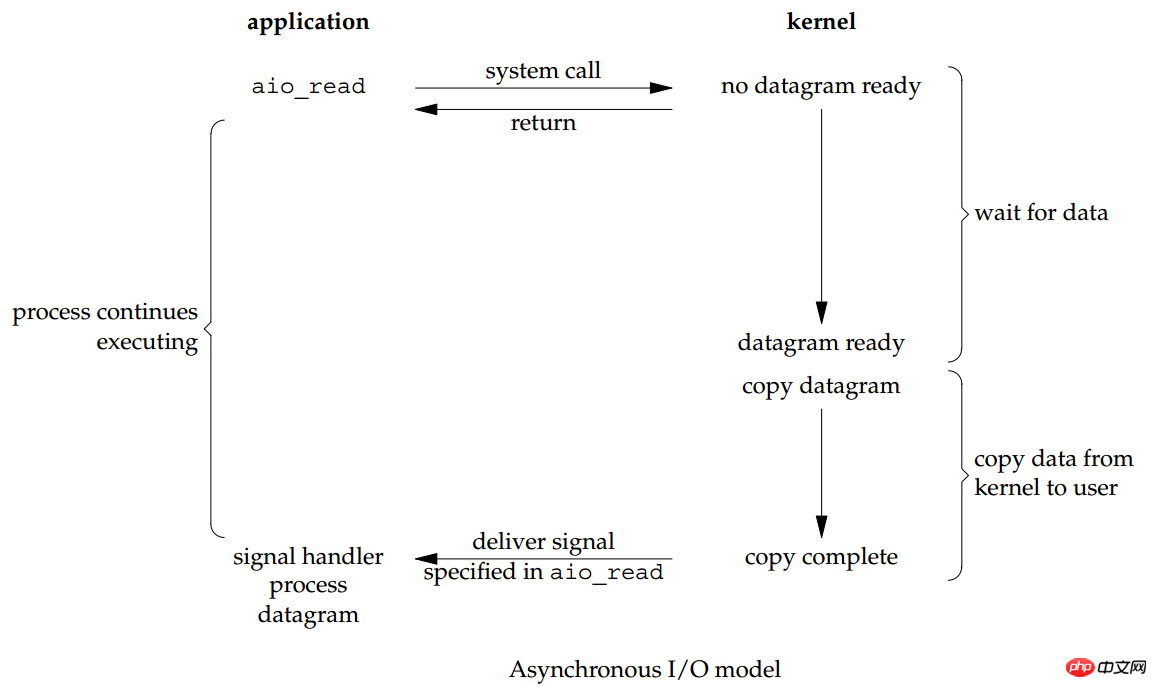
status value.
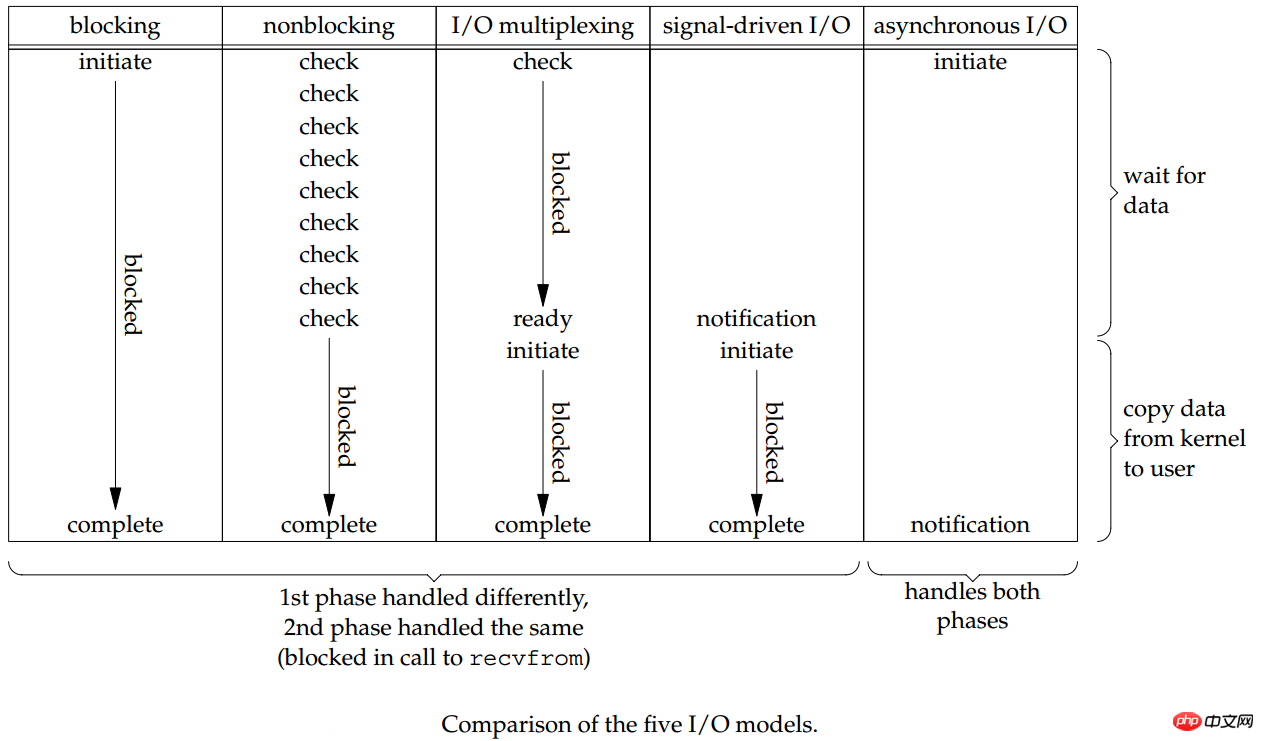
The above is the detailed content of Graphical analysis of the underlying technology of NIO and NodeJS supporting Java. For more information, please follow other related articles on the PHP Chinese website!

Hot AI Tools

Undresser.AI Undress
AI-powered app for creating realistic nude photos

AI Clothes Remover
Online AI tool for removing clothes from photos.

Undress AI Tool
Undress images for free

Clothoff.io
AI clothes remover

AI Hentai Generator
Generate AI Hentai for free.

Hot Article

Hot Tools

Notepad++7.3.1
Easy-to-use and free code editor

SublimeText3 Chinese version
Chinese version, very easy to use

Zend Studio 13.0.1
Powerful PHP integrated development environment

Dreamweaver CS6
Visual web development tools

SublimeText3 Mac version
God-level code editing software (SublimeText3)

Hot Topics
 1385
1385
 52
52
 Perfect Number in Java
Aug 30, 2024 pm 04:28 PM
Perfect Number in Java
Aug 30, 2024 pm 04:28 PM
Guide to Perfect Number in Java. Here we discuss the Definition, How to check Perfect number in Java?, examples with code implementation.
 Smith Number in Java
Aug 30, 2024 pm 04:28 PM
Smith Number in Java
Aug 30, 2024 pm 04:28 PM
Guide to Smith Number in Java. Here we discuss the Definition, How to check smith number in Java? example with code implementation.
 Java Spring Interview Questions
Aug 30, 2024 pm 04:29 PM
Java Spring Interview Questions
Aug 30, 2024 pm 04:29 PM
In this article, we have kept the most asked Java Spring Interview Questions with their detailed answers. So that you can crack the interview.
 Break or return from Java 8 stream forEach?
Feb 07, 2025 pm 12:09 PM
Break or return from Java 8 stream forEach?
Feb 07, 2025 pm 12:09 PM
Java 8 introduces the Stream API, providing a powerful and expressive way to process data collections. However, a common question when using Stream is: How to break or return from a forEach operation? Traditional loops allow for early interruption or return, but Stream's forEach method does not directly support this method. This article will explain the reasons and explore alternative methods for implementing premature termination in Stream processing systems. Further reading: Java Stream API improvements Understand Stream forEach The forEach method is a terminal operation that performs one operation on each element in the Stream. Its design intention is
 TimeStamp to Date in Java
Aug 30, 2024 pm 04:28 PM
TimeStamp to Date in Java
Aug 30, 2024 pm 04:28 PM
Guide to TimeStamp to Date in Java. Here we also discuss the introduction and how to convert timestamp to date in java along with examples.
 Java Program to Find the Volume of Capsule
Feb 07, 2025 am 11:37 AM
Java Program to Find the Volume of Capsule
Feb 07, 2025 am 11:37 AM
Capsules are three-dimensional geometric figures, composed of a cylinder and a hemisphere at both ends. The volume of the capsule can be calculated by adding the volume of the cylinder and the volume of the hemisphere at both ends. This tutorial will discuss how to calculate the volume of a given capsule in Java using different methods. Capsule volume formula The formula for capsule volume is as follows: Capsule volume = Cylindrical volume Volume Two hemisphere volume in, r: The radius of the hemisphere. h: The height of the cylinder (excluding the hemisphere). Example 1 enter Radius = 5 units Height = 10 units Output Volume = 1570.8 cubic units explain Calculate volume using formula: Volume = π × r2 × h (4
 How to Run Your First Spring Boot Application in Spring Tool Suite?
Feb 07, 2025 pm 12:11 PM
How to Run Your First Spring Boot Application in Spring Tool Suite?
Feb 07, 2025 pm 12:11 PM
Spring Boot simplifies the creation of robust, scalable, and production-ready Java applications, revolutionizing Java development. Its "convention over configuration" approach, inherent to the Spring ecosystem, minimizes manual setup, allo
 Create the Future: Java Programming for Absolute Beginners
Oct 13, 2024 pm 01:32 PM
Create the Future: Java Programming for Absolute Beginners
Oct 13, 2024 pm 01:32 PM
Java is a popular programming language that can be learned by both beginners and experienced developers. This tutorial starts with basic concepts and progresses through advanced topics. After installing the Java Development Kit, you can practice programming by creating a simple "Hello, World!" program. After you understand the code, use the command prompt to compile and run the program, and "Hello, World!" will be output on the console. Learning Java starts your programming journey, and as your mastery deepens, you can create more complex applications.



